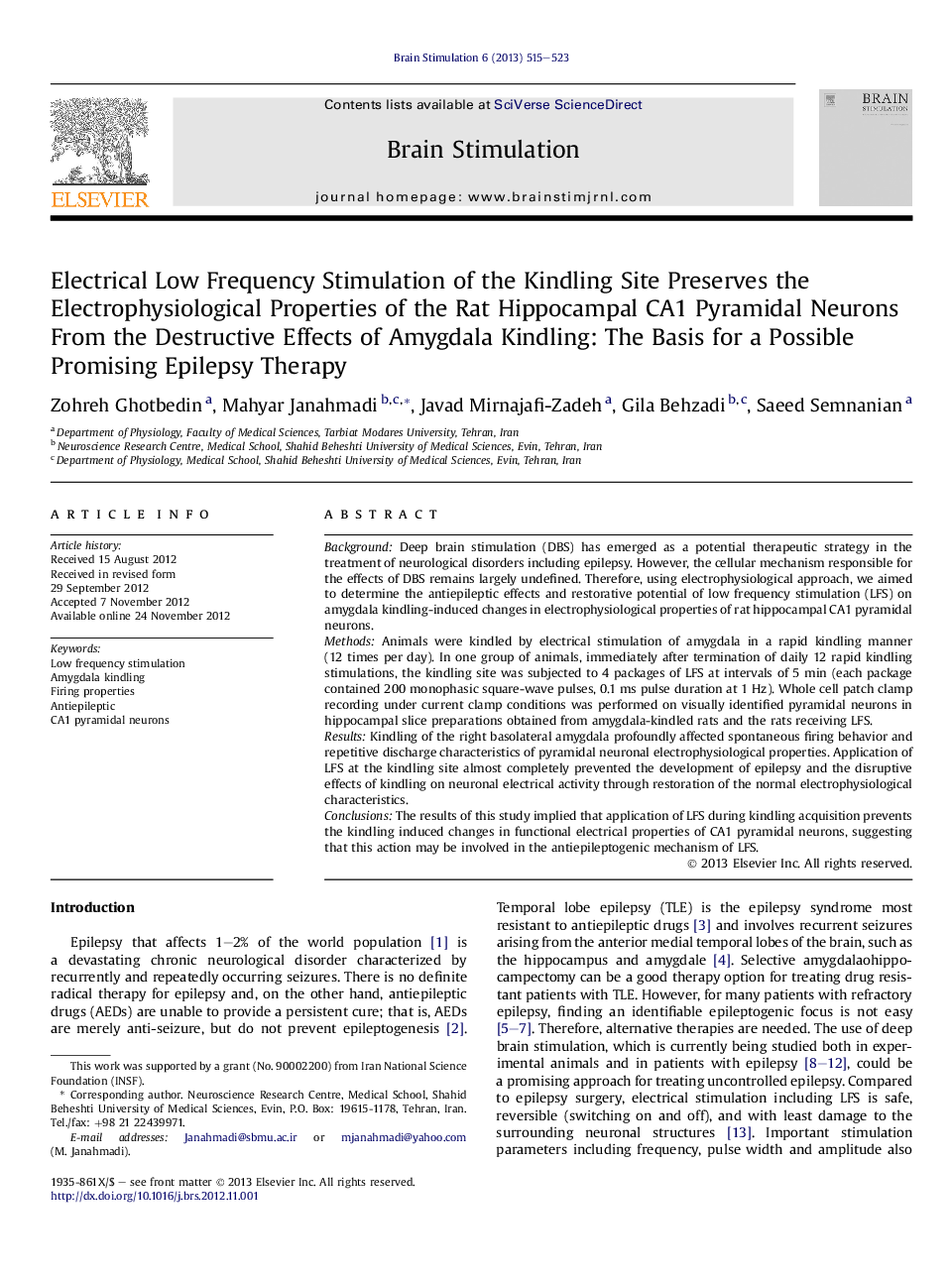| Article ID | Journal | Published Year | Pages | File Type |
|---|---|---|---|---|
| 3038911 | Brain Stimulation | 2013 | 9 Pages |
BackgroundDeep brain stimulation (DBS) has emerged as a potential therapeutic strategy in the treatment of neurological disorders including epilepsy. However, the cellular mechanism responsible for the effects of DBS remains largely undefined. Therefore, using electrophysiological approach, we aimed to determine the antiepileptic effects and restorative potential of low frequency stimulation (LFS) on amygdala kindling-induced changes in electrophysiological properties of rat hippocampal CA1 pyramidal neurons.MethodsAnimals were kindled by electrical stimulation of amygdala in a rapid kindling manner (12 times per day). In one group of animals, immediately after termination of daily 12 rapid kindling stimulations, the kindling site was subjected to 4 packages of LFS at intervals of 5 min (each package contained 200 monophasic square-wave pulses, 0.1 ms pulse duration at 1 Hz). Whole cell patch clamp recording under current clamp conditions was performed on visually identified pyramidal neurons in hippocampal slice preparations obtained from amygdala-kindled rats and the rats receiving LFS.ResultsKindling of the right basolateral amygdala profoundly affected spontaneous firing behavior and repetitive discharge characteristics of pyramidal neuronal electrophysiological properties. Application of LFS at the kindling site almost completely prevented the development of epilepsy and the disruptive effects of kindling on neuronal electrical activity through restoration of the normal electrophysiological characteristics.ConclusionsThe results of this study implied that application of LFS during kindling acquisition prevents the kindling induced changes in functional electrical properties of CA1 pyramidal neurons, suggesting that this action may be involved in the antiepileptogenic mechanism of LFS.
